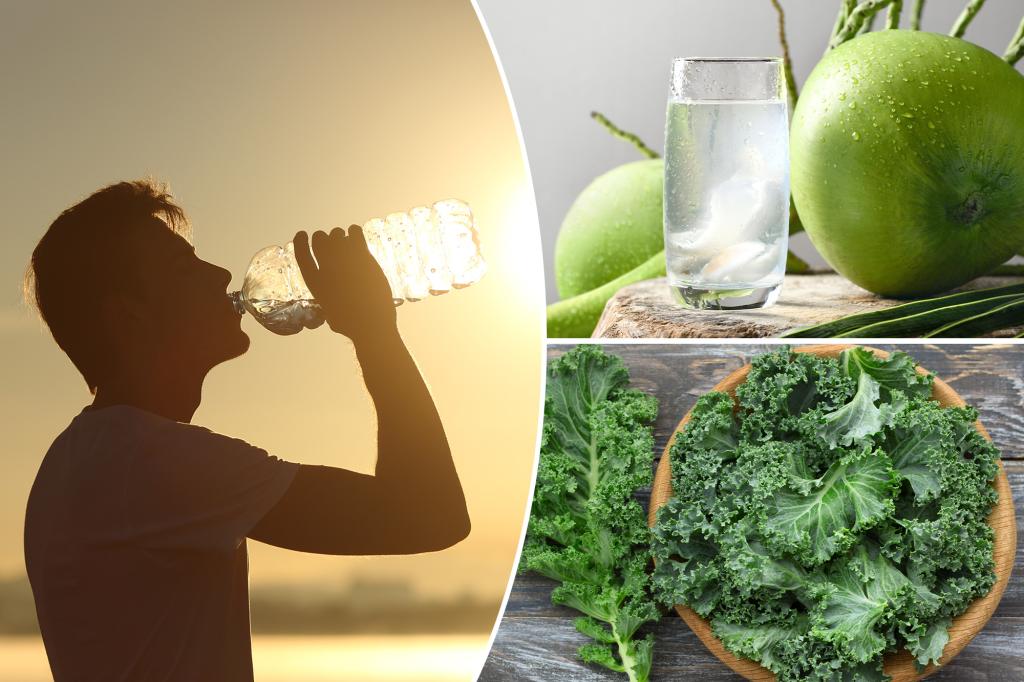The world is on fire, and this summer’s record-high temperatures prove it. And some experts say that when the heat index is high, water alone isn’t enough to hydrate the body.
“In high temperatures, you need both fluids and minerals to regulate body temperature and muscle function. Electrolytes like sodium and potassium help your cells hold onto water, reducing dehydration,” said Dr. Nicole Tsang, clinician at Circle Medical.
Experts like Tsang recommend consuming 0.5 to 1 ounce of water per pound of body weight per day. However, when temperatures rise, proper hydration equals vigilance plus increased intake.
“Prevention is key during a heatwave. By combining smart hydration with electrolyte-rich foods, you can stay well and protect your body from heat stress.”
Proper hydration plays a crucial role in regulating body temperature, preventing infections, eliminating waste and enhancing nutrient absorption. It’s also involved in optimizing sleep, cognition and mood, with studies suggesting that adequate hydration makes you a better person.
On the flip side, a recent study found that not consuming enough water increases the risk of death in middle-aged folks by 20%.
Tsang notes that as temperatures increase, so too does our sweat response, leading to a loss of electrolytes.
“Sweat depletes essential minerals. Without replacing them, your body struggles to maintain fluid balance,” she said.
Below, she shared five doctor-approved foods to help the body stay balanced.
Watermelon
As the name implies, watermelon is water-rich, at 92% H2O. In addition to helping hydrate, watermelon is an excellent source of cell-boosting lycopene.
“It’s also high in potassium, which helps regulate fluid balance and supports muscle function,” said Tsang.
Eaten chilled or blended, it’s a refreshing way to replenish your energy.
Cucumber
At 96% water, cucumbers have the highest H2O content of any solid food and contain anti-inflammatory compounds that can help reduce internal heat and promote hydration.
Tsang suggests adding cucumbers to salads and chilled soups, or infusing water with them “for a cooling twist.”
For those looking for more ways to curate the cuke, TikTokker Logan Moffitt, lovingly nicknamed “the cucumber guy,” has risen to produce popularity with his viral cucumber salad recipes.
Leafy greens like spinach and kale
Dark leafy greens are rich in magnesium, “a key electrolyte involved in hydration, nerve signaling and temperature regulation,” said Tsang.
Kale and spinach are also excellent sources of vitamins A, C, and K, as well as calcium.
To get your greens, Tsang recommends adding kale or spinach to your smoothie or pairing them with citrus-based dressings.
Yogurt
Yogurt contains calcium and potassium. Tsang notes that the high protein content in yogurt helps maintain stable energy levels during heat spikes, while probiotics support digestive health.
Coconut water
Coconut water contains electrolytes that help with hydration, along with antioxidants that support immune health and help the body fight oxidative stress.
“Often called ‘nature’s sports drink,’ coconut water naturally contains potassium, sodium, and magnesium, making it ideal for post-sweat rehydration,” said Tsang.
You can drink it on its own, use it as a base for a smoothie, or try it in the viral “cloud coffee” trend.
Warning signs of dehydration
How do you know when it’s time to reup on H2O and hydrating foods? Tsang says symptoms of dehydration include:
- Dry mouth
- Dizziness or light-headedness
- Fatigue or irritability
- Dark urine or infrequent urination
These symptoms can quickly escalate in hot weather, leading to more severe signs, such as confusion, a rapid heart rate or fainting. If you experience these symptoms, seek immediate medical care.
Prevent dehydration
To prevent dehydration during the summer months, Tsang recommends sipping water throughout the day and pairing it with hydrating foods to improve retention.
She also advises people to limit salty snacks and avoid caffeinated and alcoholic beverages, as these can increase fluid loss.
Finally, keep summer meals light and fresh with an emphasis on fruits and veggies.
Read the full article here

